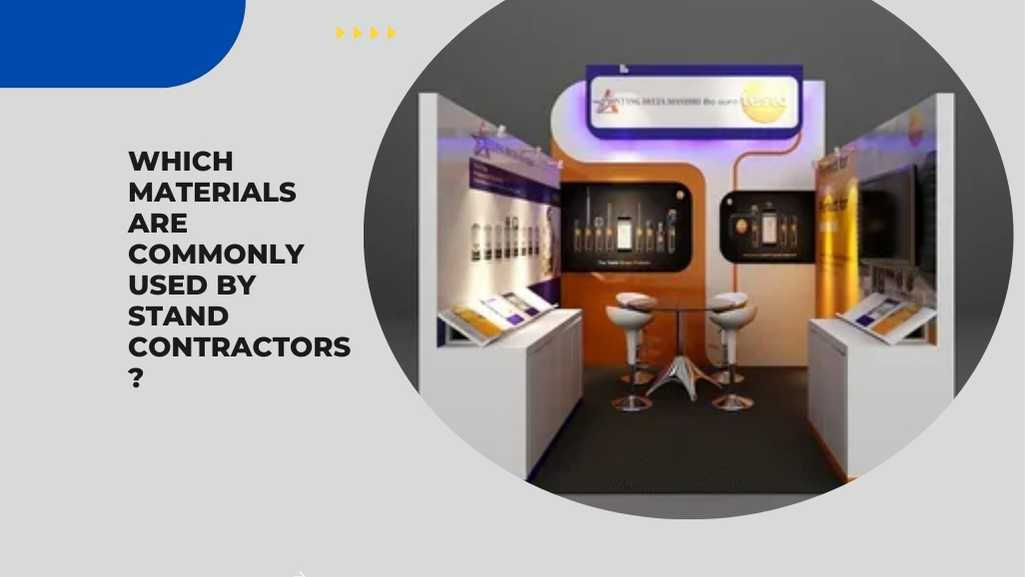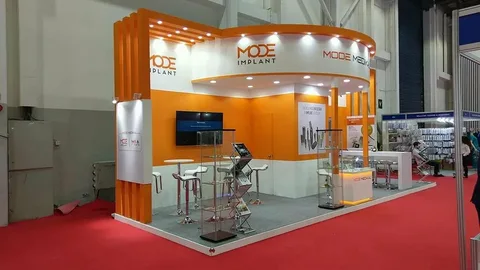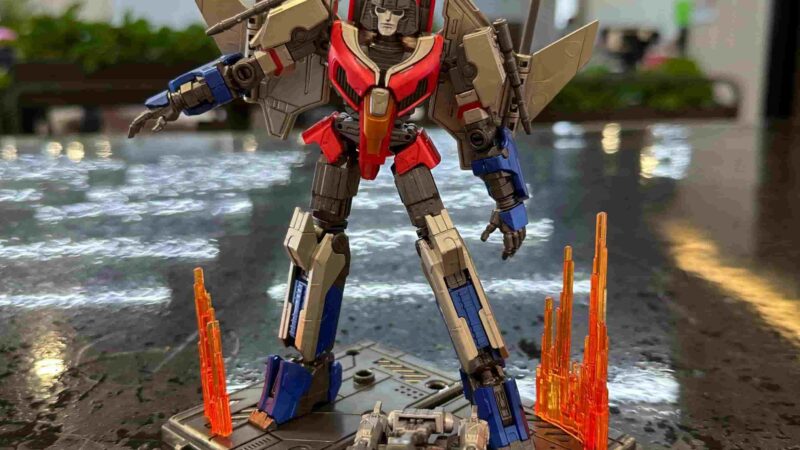Which Materials Are Commonly Used by Stand Contractors?

When it comes to designing and constructing exhibition stands, stand contractors play a vital role. They bring creative ideas to life, ensuring that your brand stands out at trade shows and exhibitions. One important aspect of this process is the materials used to build these stands. In this article, we will explore the common materials that stand contractors use, why they choose these materials, and how they impact the overall look and functionality of the stands.
Understanding Exhibition Stands
What Is an Exhibition Stand?
An exhibition stand is a physical structure used to showcase a company’s products or services at trade shows and events. It serves as a platform to attract visitors and engage with potential customers. These stands can vary greatly in size and design, depending on the company’s needs and budget.
Why Are Materials Important?
The materials used in an exhibition stand influence many factors, such as aesthetics, durability, and cost. The right materials can help create an eye-catching display that draws in visitors, while also being strong enough to withstand the rigors of transportation and setup.
Note: A well-designed exhibition stand can attract more visitors and enhance your brand visibility. Professional stand contractors in Dubai specialize in creating innovative displays that stand out in crowded venues. They work closely with you to understand your goals and preferences, ensuring a customized approach. For a remarkable exhibition experience, consider teaming up with Mystique Exhibitions. Their skilled team will help you make your mark at any event!
Commonly Used Materials by Stand Contractors
1. Wood
Characteristics of Wood
Wood is one of the most popular materials used by stand contractors. It is versatile and can be crafted into various shapes and designs. Different types of wood, such as plywood, MDF (Medium Density Fiberboard), and solid wood, can be used based on the desired finish and budget.
Advantages of Using Wood
- Aesthetic Appeal: Wood has a natural beauty that can enhance the look of any stand. It can be stained or painted to match the brand’s colors.
- Customization: Wood can be easily cut and shaped, allowing for creative designs that stand out.
- Durability: When properly treated, wooden stands can last for several exhibitions.
Disadvantages of Using Wood
- Weight: Wood can be heavy, making it more challenging to transport and set up.
- Cost: High-quality wood can be expensive compared to other materials.
2. Metal
Types of Metal Used
Metal is another popular choice for stand contractors. Common types include aluminum and steel. These metals are often used for frameworks, supports, and structural components.
Benefits of Metal
- Strength: Metal is incredibly strong and can support heavy displays and equipment.
- Longevity: Metal stands are durable and can withstand wear and tear over time.
- Sleek Look: Metal offers a modern and professional appearance that can enhance any exhibit.
Drawbacks of Metal
- Corrosion: Some metals can corrode if not properly coated or maintained.
- Cost: Depending on the type, metal can be expensive.
3. Fabric
Types of Fabric Used
Fabric is frequently used in exhibition stands, especially for backdrops and banners. Common fabrics include polyester, cotton, and vinyl.
Advantages of Fabric
- Lightweight: Fabric is much lighter than wood or metal, making it easy to transport and set up.
- Versatile Printing: Fabrics can be printed with high-quality graphics, making them ideal for branding.
- Flexible Design: Fabric can be draped and shaped to create unique designs.
Disadvantages of Fabric
- Durability: Fabric can be susceptible to tears and damage if not handled carefully.
- Maintenance: Fabrics may require cleaning and upkeep to maintain their appearance.
4. Acrylic
What Is Acrylic?
Acrylic, also known as plexiglass, is a clear plastic material often used in exhibition stands. It is commonly used for display cases, signage, and decorative elements.
Benefits of Acrylic
- Transparency: Acrylic allows for visibility, making it an excellent choice for display cases.
- Lightweight: Like fabric, acrylic is lightweight, making it easy to work with.
- Variety of Colors: Acrylic comes in various colors and can be customized to fit the brand’s theme.
Drawbacks of Acrylic
- Scratch-Prone: Acrylic can scratch easily, which may require careful handling.
- Cost: High-quality acrylic can be expensive compared to other plastic materials.

5. Vinyl
Characteristics of Vinyl
Vinyl is a type of plastic often used for banners, signage, and graphics. It is durable and weather-resistant, making it suitable for both indoor and outdoor displays.
Advantages of Vinyl
- Durability: Vinyl can withstand harsh conditions and is resistant to water and fading.
- Easy to Clean: Vinyl surfaces can be wiped clean easily, maintaining a fresh appearance.
- Cost-Effective: Vinyl is generally more affordable than other materials.
Disadvantages of Vinyl
- Limited Customization: While vinyl can be printed, it may not have the same premium feel as other materials.
- Weight: Depending on the thickness, vinyl can be heavier than other lightweight materials.
6. Foam Board
What Is Foam Board?
Foam board, also known as foam core, is a lightweight material made from a layer of polystyrene foam sandwiched between two sheets of paper or plastic. It is often used for creating display panels and signage.
Benefits of Foam Board
- Lightweight: Foam board is extremely lightweight, making it easy to transport.
- Cost-Effective: It is a budget-friendly option for temporary displays and signage.
- Easy to Cut: Foam board can be easily cut into various shapes for creative designs.
Drawbacks of Foam Board
- Not Durable: Foam board is not as strong as other materials and can be damaged easily.
- Limited Lifespan: It is best suited for short-term use, as it may not hold up well over time.
Factors Influencing Material Choice
1. Budget
Your budget plays a significant role in determining which materials stand contractors will use. Some materials, like wood and metal, tend to be more expensive, while others, like foam board and vinyl, are more affordable. It’s essential to balance quality with cost.
2. Design
The design of the exhibition stand will also influence material selection. For example, if the design requires intricate shapes and curves, wood may be a better choice than metal. Understanding the desired look and feel of the stand is crucial in deciding which materials to use.
3. Weight and Portability
Consider how easy it will be to transport the stand. If the stand needs to be set up and taken down frequently, lightweight materials like fabric and foam board may be more suitable. Heavier materials like wood and metal may require more effort to handle.
4. Durability
The durability of the materials is vital, especially if the stand will be used for multiple events. Materials like metal and high-quality wood are more durable, while foam board and some fabrics may only be suitable for short-term use.
5. Branding and Aesthetics
The materials chosen should reflect the brand’s identity and the image you want to convey. High-quality finishes and appealing materials can enhance brand visibility and create a positive impression on visitors.
Combining Materials for Better Results
Many stand contractors use a combination of materials to achieve the best results. For example, they might use a wooden framework with fabric panels for a modern yet warm look. Mixing materials can add depth and interest to the design, making it more engaging for visitors.
Examples of Material Combinations
- Wood and Fabric: A wooden frame with fabric draped across it can create an inviting atmosphere.
- Metal and Acrylic: Using metal supports with acrylic displays can create a sleek and contemporary look.
- Vinyl and Foam Board: Combining vinyl graphics on foam board can result in eye-catching signage that is lightweight and easy to transport.
Conclusion
In conclusion, the materials used by stand contractors significantly impact the design, functionality, and overall success of an exhibition stand. From wood and metal to fabric and acrylic, each material offers unique benefits and drawbacks. When planning your exhibition stand, it’s essential to consider your budget, design needs, and the intended use of the stand.
Choosing the right materials can enhance your brand’s visibility and attract more visitors to your booth. Stand contractors have the expertise to guide you in making the best choices for your needs. By understanding the materials commonly used in exhibition stands, you can create an engaging and memorable experience for your audience.
For More Insightful Articles Related To This Topic, Feel Free To Visit: gettoplists.


